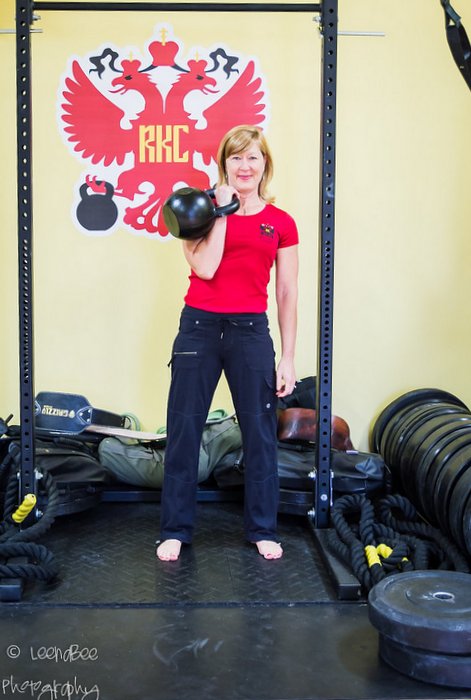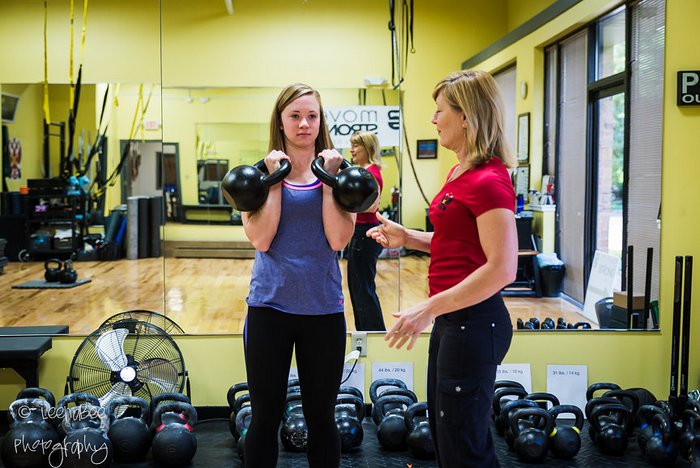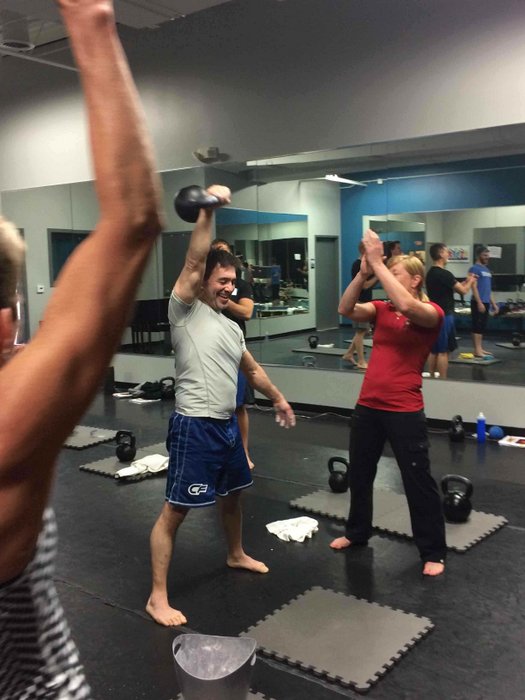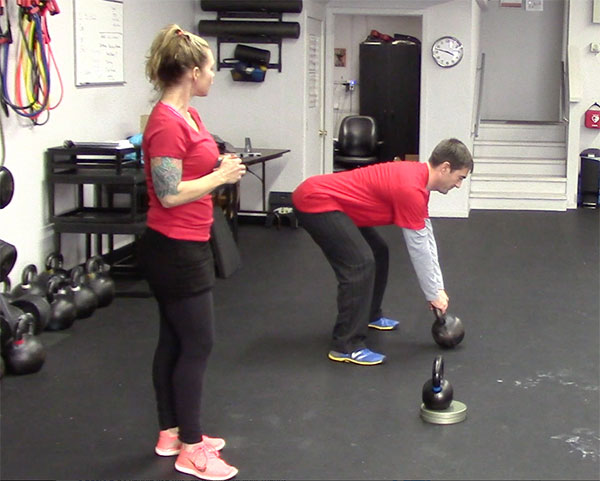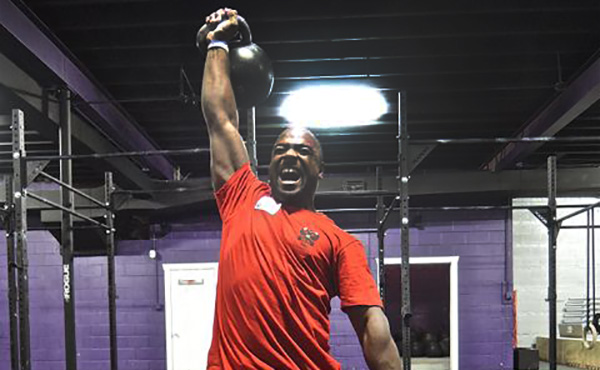
The RKC Kettlebell Snatch Test seems to bother many people. It’s 100 reps, and quickly indicates the issue:
Is it your lungs?
Is it your buns?
Is it your guns?
During the snatch test, the skin comes off your hands, sweat drips in your eyes, and your organs seem to rise up in rebellion. If you have been practicing the snatch test by practicing under ten reps, resting for a set period, then repeating, you can usually have pretty lousy technique without ripping skin off of your hands.
Sadly, for the people I have prepped, I learned that the proper way to help someone improve their kettlebell snatch is to wait until around rep 70 to comment. The challenge of doing 100 reps in a set period of five minutes demands that the candidate bite the bullet and learn to keep snatching properly throughout the challenge.
After the first Belfast RKC, one attendee wrote, “With one sentence, you changed the way I snatched and I nailed the test.” I asked what the sentence was and the newly minted RKC answered, “It was when you said that you need the courage to drop the kettlebell into the swing with authority each and every time.”
Remember, first and foremost:
The swing is a swing.
The clean is a swing.
The snatch is a swing.
The bulk of the issues most people have with the clean or snatch can be cured by coaching the swing portion of the moves. As if by magic, learning a proper swing for the clean or snatch stops most wrist banging and lockout issues.
But, for a proper swing, we must set up for it with a good drop from the snatch. Teaching the kettlebell snatch “from the top down” has advantages that are only apparent when the reps are high. Again, a few sets of five then resting will be a lot different than going after 100 snatches in 5 minutes.
Three terms that seem to help 99% of the population when working with the snatch from the top down are: “Pour the Pitcher,” “Swim” and “Unzip the Jacket.” Before getting into the specifics, let’s look at a key principle explained at a recent workshop, the position of the body in the “Cylinder.”
In the Olympic lifts—especially the locked out front squat position just before the jerk (or in training movements)—the lats are flared out, and the chest is tall in what most people would recognize as the traditional “Muscle Beach” pose. Although this posture is ideal for some movements, we want a slightly different position. The opposite of this posture is the “hollow rock” from gymnastics. While it is perfect for holding an Iron Cross on the rings, this position is not what we want for our RKC movements. Instead, consider a position “in the middle.” Now, I love continuums, so think of the Olympic lifting posture on one end, and the hollow rock on the other—the RKC cylinder would be in the middle.
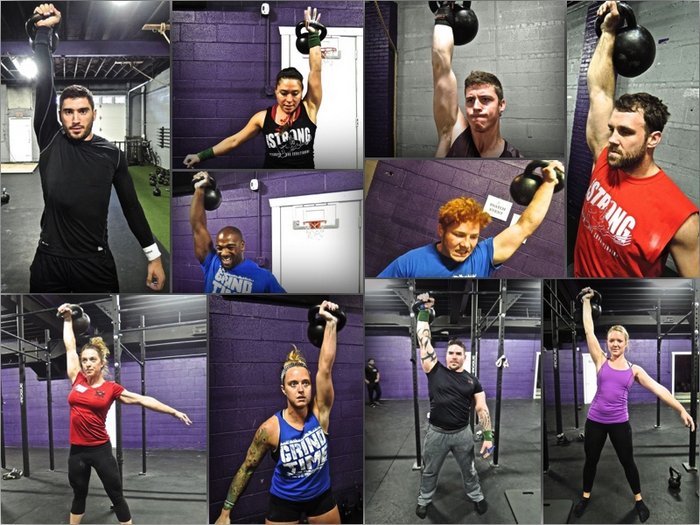
This insight allowed me to finally connected the dots in regards to holding the hips in a neutral stance for training. If the pelvis is like a bowl filled with water, we want to stand (and stretch and move generally) without the water pouring out forward, backward or to either side. Utilizing this notion of a cylinder helps immensely with the hip position, too. It’s like the story of the Three Bears, one wants to stand “Just Right.”
While we are discussing posture, let’s add an additional insight about the packed shoulder. Sometimes, it is difficult to teach the packed arm to experienced athletes. Years of compensations can make some people convinced that their shoulders are packed, when in truth, their traps are on their ears! Fortunately there’s a very simple solution for this problem:
Years ago, Janis Donis, the famous Javelin thrower, told me that all throwing movements need to be done with an “open armpit” to protect the shoulder. This idea illuminated my discus throwing and kept me trouble-free with decades of pain-free shoulders. Literally, the entire armpit should be exposed for throwing movements. It shouldn’t twist or turn the shoulder down, a movement that often signals an “arm throw.”
As I worked with more and more guys who had played collision sports and trained like bodybuilders, teaching the packed shoulder became a more of a chore. Between the injuries and Frankenstein training, many athletes were not aware of where their shoulders were. Many were thinking, “Isn’t it right next to my head?”
Get ready for my million-dollar drill: Grab the tag on the back of your shirt collar. For most people, this will pack the shoulder “instantly”. Now, many people will need to slide down the spine a bit more to get the position, but this simple movement “instantly” packs the shoulder. Note how the bicep is on the ear? This is also probably the most-heard phrase during waiter walks, consider how “open” the arm pit has become with this simple move. Now, hold the shoulder in this position and simply straighten the arm. Now we have the packed shoulder and the open arm pit. Now that the body is in the cylinder, it is time to drop the kettlebell.
Let’s look at three terms or images that all lead to the same powerful swinging hip hinge. Let’s start with “Pour the Pitcher.” Now, if I drop the kettlebell straight down, my head is the first point of contact. Hitting the head multiple times with a heavy kettlebell is NOT optimal. Yes, please feel free to quote me on that. So, obviously, we need to push the bell forward. But, launching it straight out to the position of the top of the swing is not perfect either. With a heavy kettlebell, the athlete simply can’t counter this movement, and the athlete will either be pulled forward, or the kettlebell may even cause damage or injury—this is a lot of force in a bad position!
The first image I ever heard for the proper drop was “Pour the Pitcher.” With the thumb leading from the lockout position, simply turn the wrist and think of pouring milk on some cereal. (Just think of the cereal, don’t eat it. Cereal is for cows. Eat the cow instead.) Because of gravity, the kettlebell will start coming down in front. I encourage people to immediately get “the courage” to attack the hinge here.
“Swimming” is another cue that helps some people. Like the crawl stroke, imagine bringing the bell down the midline of the body as if you were doing laps in a pool. This image immediately made sense to me because the correct crawl stroke isn’t performed with a straight arm or a precisely prescribed angle, the elbow angle “depends” on many factors. The same is true for the kettlebell snatch. I also like this term because it illustrates that this is a dynamic movement, not just a simple free fall.
“Unzip the Jacket” is a phrase I heard at my RKC in San Jose. Simply, one should think of unzipping a jacket. Again, there is no National Zipping Policy, so there will be multiple ways to accomplish this task. As always, keep thinking about attacking the hinge.
Something I hear over and over from RKC candidates who FAIL the snatch test is the following kind of statement:
“Well, I did 30 reps the first time I tried the test, then built up to 54 with the 24kg kettlebell. I was hoping that the energy and enthusiasm of the group would get me those last 46 reps.”
I believe that you should come to the RKC already able to do 100 reps of the snatch. Now, that doesn’t mean every workout is done with the snatch-test weight kettlebell. Months before the RKC, I often recommend that the candidate use lighter kettlebells—as light as 12kg for men—and do several sets of 100 in training. I think it helps to “get used to” 100 reps.
Recently, I did a little challenge where I had to do 100 reps with the 24kg kettlebell. At 18 reps, I smiled. Later, I was asked, “Why did you smile?” Well, it’s because I use this system:
- 20 reps with my left hand
- 20 reps with my right.
- 15 left
- 15 right
- 10 left
- 10 right
- 5 left
- 5 right
This system gives a total of 100 reps with only seven hand switches. At 18 reps, I figure that I only have two more reps left with my weak hand and then I get to use my strong hand. In my mind, the first twenty reps get me over the hard part! The next eighty reps will be dessert.
But, if you don’t have the courage to actively drop the kettlebell for each and every rep, every rep will be hell.
****
Master RKC, Dan John is the author of numerous fitness titles including the best selling Never Let Go and Easy Strength.
Dan has spent his life with one foot in the world of lifting and throwing, and the other foot in academia. An All-American discus thrower, Dan has also competed at the highest levels of Olympic lifting, Highland Games and the Weight Pentathlon, an event in which he holds the American record.
Dan spends his work life blending weekly workshops and lectures with full-time writing, and is also an online religious studies instructor for Columbia College of Missouri. As a Fulbright Scholar, he toured the Middle East exploring the foundations of religious education systems. For more information visit: http://danjohn.net
